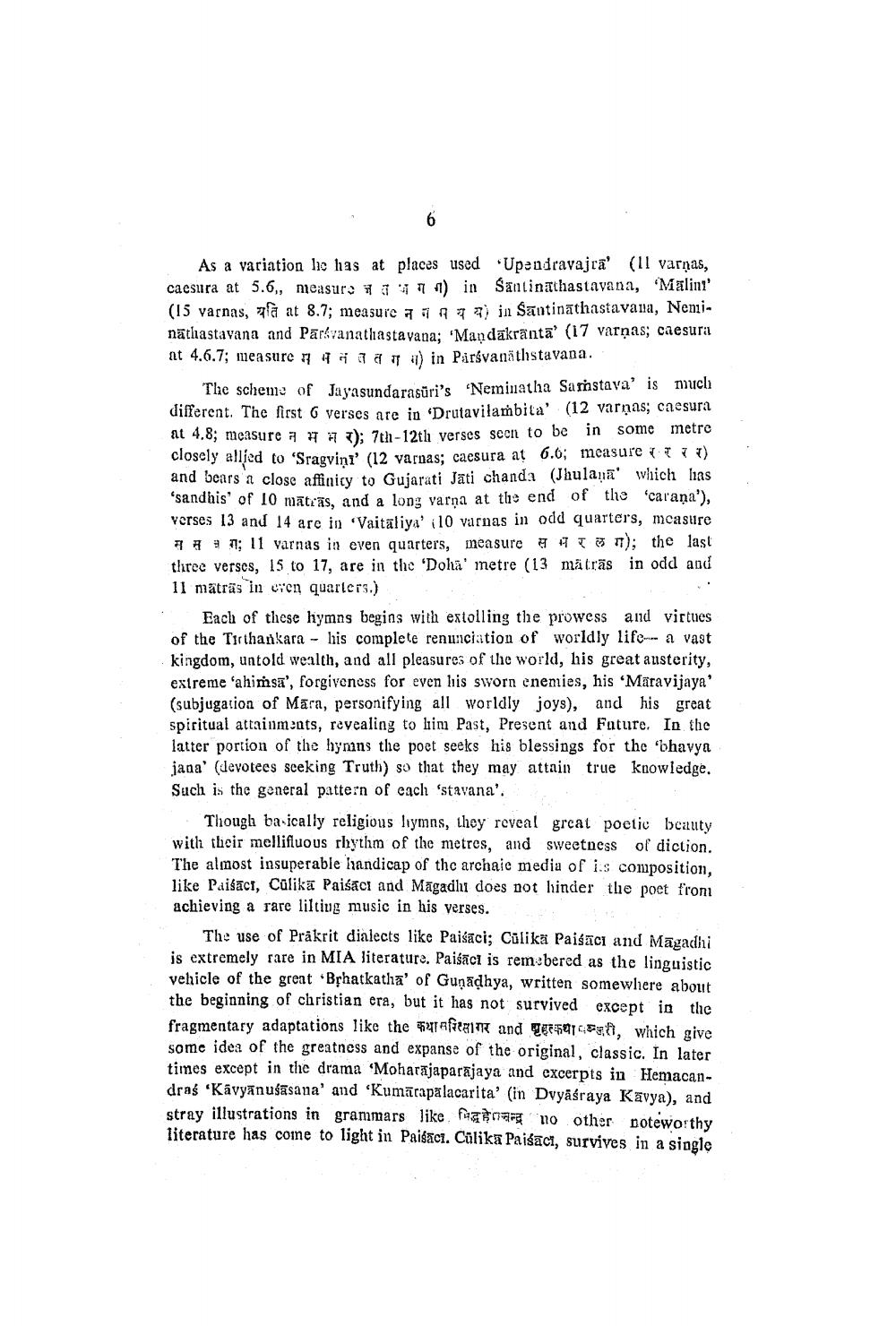________________
As a variation lic has at places used “Upendravajra' (Il varņas, caesura at 5.6., measure a 171) in Santinathastavana, "Malini' (15 varnas, zlà at 8.7; measure 7 99a) in Santinathastavana, Neni. nathastavana and Parkvanathastayana: Mandakrantal (17 varnas; caesura at 4.6.7; measure 17 4 no w ) in Parsvanäthstavana.
The scheme of Jayasundarasuri's Neminatha Samstava' is much different. The first 6 verses are in Drutavilambita' (12 varnas; caesura at 4.8; measure 7 7 7 ); 7th-12th verses soon to be in some metre closely allied to 'Sragvini' (12 varnas; caesura at 6.6; measure ) and bears a close affinicy to Gujarati Jati chanda (Jhulana' which lias sandhis' of 10 mātxas, and a long varna at the end of the 'carana'), verses 13 and 14 are in "Vaitaliya' i10 varnas in odd quarters, measure
7 8 9 10 11 varnas in even quarters, measure A TOT); the last three verses, 15 to 17, are in the 'Doha' metre (13 mäträs in odd and 11 mäträs in wien quarters.) e
Each of these hymns begins with extolling the prowess and virtues of the Tirthankara - his complete renunciation of worldly life. a vast kingdom, untold wealth, and all pleasures of the world, his great austerity, extreme 'ahimsa', forgiveness for even his sworn cnemies, his ‘Maravijaya' (subjugation of Mara, personifying all worldly joys), and his great spiritual attainments, revealing to liim Past, Present and Future. In the latter portion of the hynins the poet seeks his blessings for the 'bhavya jana' (devotees sceking Truth) so that they may attain true knowledge. Such is the general pattern of each 'stavana'.
Though ba-ically religious lymns, they reveal great poetic beauty with their mellifluous rhythm of the metres, and sweetness of diction. The almost insuperable handicap of the archaie media of is composition, like Paisac, Calika Paisack and Magadlı does not hinder the poet from achieving a rare lilting music in his verses.
The use of Prakrit dialects like Paisaci; Culika Paisaci and Magadhi is extremely rare in MIA literature. Paisaci is remebered as the linguistic vehicle of the great Bphatkatha' of Guņādhya, written somewhere about the beginning of christian era, but it has not survived except in the fragmentary adaptations like the कथासरित्सागर and वृहत्कथामरी, which give some idea of the greatness and expanse of the original, classic. In later times except in the drama 'Moharajaparājaya and excerpts in Hemacandras Kavyānusasana' and 'Kumārapalacarita' (in Dvyäśraya Kavya), and stray illustrations in grammars like factors no other noteworthy literature has come to light in Paisaci. Culika Paisaci, survives in a single




